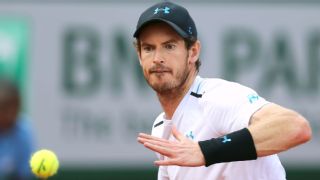|
The tennis world went dark in mid-November, and it will pretty much stay that way for the next few weeks, until the start of the official 2018 ATP and WTA seasons. A new year always ushers in a host of questions, and this year's crop is especially intriguing. That's because so many of them are about the game's superstars. Here are five that stand out with the Australian Open set to begin in exactly a month. What's the deal with Serena Williams? The only thing we know for certain at this juncture is that because of a No. 22 ranking at the deadline for entries, Williams is among the 107 players who are automatically entered based on ranking (the rest of the 128-woman field will consist of wild cards and qualifiers). Whether Williams chooses to play is yet to be determined. About a week ago, Australian Open tournament director Craig Tiley told the Melbourne Herald Sun newspaper that Williams' return was "very likely." He added, "She's got her visa, she's entered, she's practicing and she's probably just got to find a bit more space for a bigger entourage." That sounds like a pretty firm confirmation, but the Williams camp has been conspicuously silent since Patrick Mouratoglou, Williams' coach (and an ESPN analyst), said at the beginning of the month that nothing had been decided. Williams would be seeking her 24th Grand Slam title. In August, she told Vogue that she had an "outrageous plan" to return to defend her Australian Open title. Will Novak Djokovic recover his intensity? Todd Martin, a former pro who briefly coached Djokovic, told ESPN, "Even if Novak's not dominating, to a person watching, it looks like he's dominating." Djokovic brings an intensity to each and every point. That flame began wavering almost immediately after the Serbian star completed his career Grand Slam at the 2016 French Open, and it sputtered right up until Djokovic abandoned his 2017 campaign in July in order to rest his sore right elbow. At the time, Djokovic was also in the midst of recovering from "private issues" and restructuring his support team. He's added two new coaches, Andre Agassi and Radek Stepanek. Agassi is confident that Djokovic can recover his equilibrium. He recently told ESPN, "I don't need to change Novak; I just need him to start seeing himself as a player and person the way I see him." Agassi is a persuasive individual, capable of inspiring others. But Djokovic is 30, coming off an extended period of domination followed by some soul-searching. There will be no way to tell whether he's recovered his lost intensity until the balls start flying. Will there be a shake-up in the WTA rankings? At the end of the year, the WTA looked like one of those self-driving cars. There was nobody in the driver's seat. But that could change dramatically if Serena returns with gusto and Maria Sharapova can recover her dominant form. Angelique Kerber could also be a factor if she can rebound from a yearlong champion's hangover that followed her astonishingly successful 2016. Those are three big question marks. If they don't pan out, it looks like a free-for-all. Three of the four top-ranked players this year have never won a major singles title despite having opportunities. The fourth (Garbine Muguruza) has won two but misplaces her game for long stretches. A dizzying array of legitimate challengers wait in the wings, starting with French Open champion Jelena Ostapenko and two-time Wimbledon winner Petra Kvitova. Was it a wise decision for Andy Murray to choose rest over surgery? ESPN analyst Brad Gilbert had a valuable warning for players taking extended breaks from the game, a la Roger Federer in the second half of 2016.  "It turned out like a genius move that Roger took six months off," Gilbert said. "But what if a 'normal' player did that? Fed is a unique case. He's a maestro. Just because it worked for the conductor doesn't mean it's going to work for everyone in the orchestra." Murray isn't exactly your run-of-the-mill player, but Gilbert's warning is still relevant, especially because Murray took a long time rounding into form after season-ending back surgery in 2013. This time he avoided surgery but not risk. If his hip injury begins to flare up again after his four-month break, that's going to be disconcerting. Murray, 30, recently parted ways with supercoach Ivan Lendl. This comeback is festooned with red flags. Can No. 1 Rafael Nadal and Federer duplicate their feats of 2017? Federer is 36 and Nadal is 31, but the latter is carrying a long portfolio of injuries. They dominated in 2017 but with considerable help from fate, as Djokovic, Murray and finally even Stan Wawrinka struggled with injuries. The landscape will be different in 2018. The main advantage the two stalwart champs will have going for them is the confidence they gained as they evenly split the four Grand Slam singles titles this year. It will be an especially valuable complement against Djokovic, the man who handled them both for close to three years. Should Federer and Nadal continue ripping through majors, their own rivalry will again push all other stories aside. Paul Annacone, Federer's former coach and now a Tennis Channel commentator told ESPN: "I don't think the head-to-head is important to Roger at all." Nadal leads it 23-15, but Federer is on a five-match win streak. "He's comfortable with what he's done. His goal in life wasn't to beat Rafa. But if it gets much closer, he might get more interested. Everybody is human."
|

